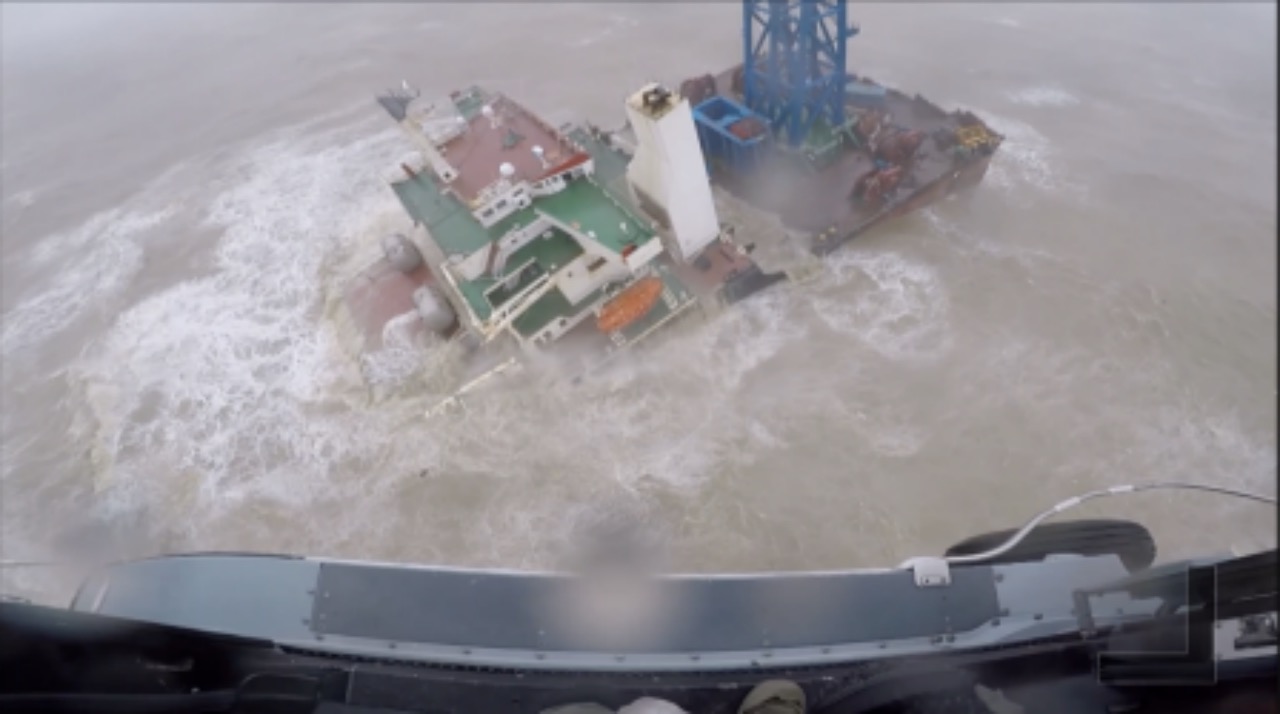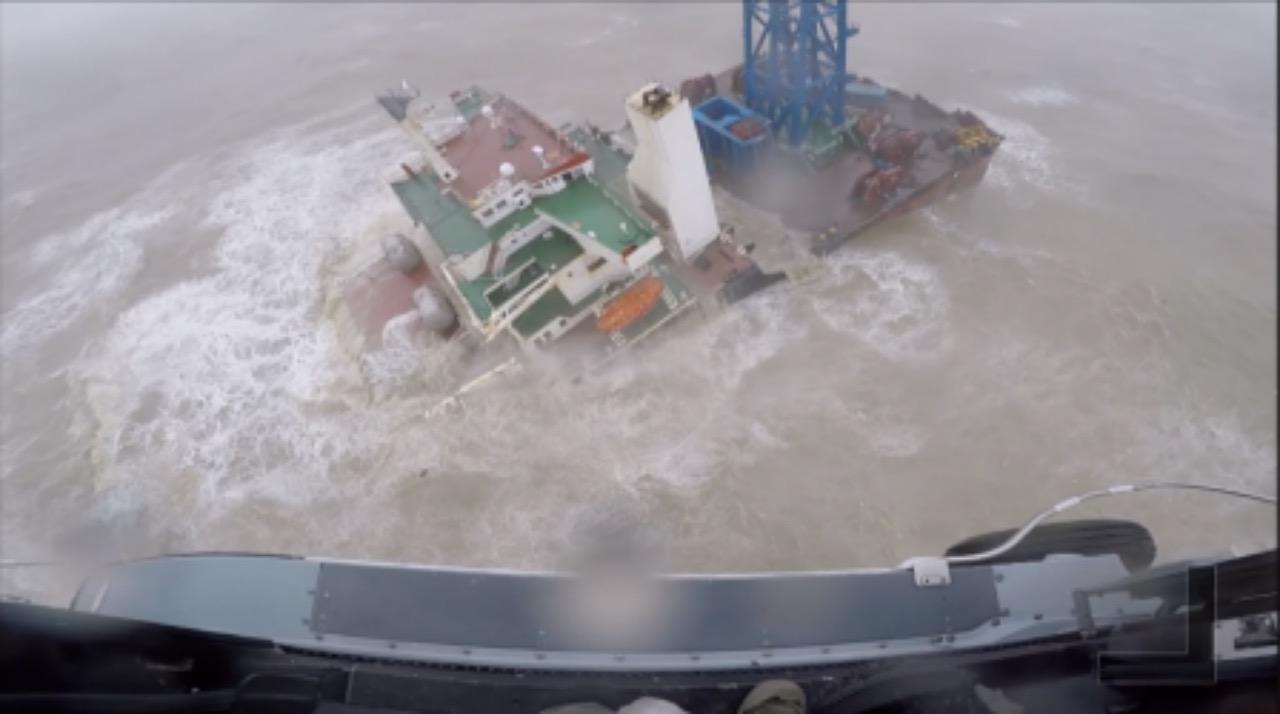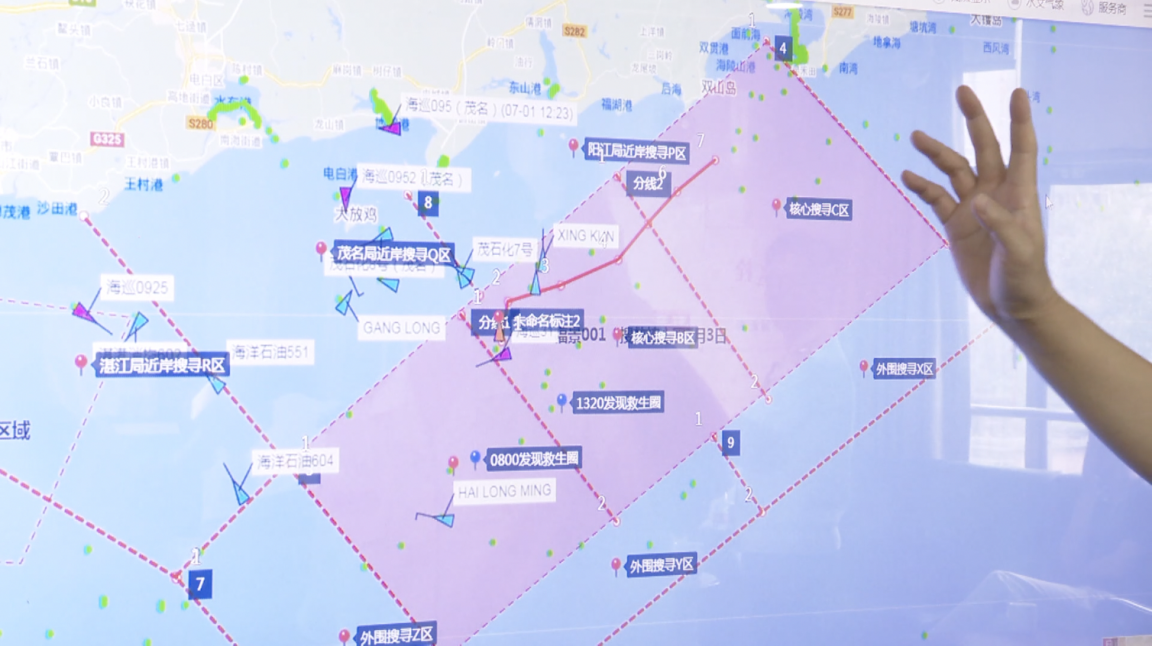
Helicopters are searching for survivors of the sunk engineering vessel "Fujing 001" in waters off Yangjiang City, south China's Guangdong Province. /CGTN
Helicopters are searching for survivors of the sunk engineering vessel "Fujing 001" in waters off Yangjiang City, south China's Guangdong Province. /CGTN
Twelve people have been confirmed dead after a China-registered floating vessel involved in the construction of offshore wind farms sank after being hit by Typhoon Chaba.
The clock is ticking as the search continues for the missing crew members of "Fujing 001."
Only four of the 30 crew members have been found alive so far following the sinking of the vessel in the storm over the weekend. The fourth person was rescued on Monday. Twelve bodies have been recovered not far from the site of the sinking, but the identities of the victims are yet to be confirmed. Concerns have intensified over the fate of the missing.
The Fujing 001 had been sheltering from Typhoon Chaba but couldn't cope with the sheer power when the typhoon arrived, and snapped in two on Saturday and ultimately sank.
00:32

A new recording of crew members calling for help was released on Monday. Apparently, they called both South China Sea Rescue Bureau and Chinese Navy for help, saying "You're our only hope." One crew member was heard saying that water was filling in to the crane. Unfortunately, help didn't get there on time.
The search and rescue mission still continues, and authorities in south China's Hong Kong Special Administrative Region and Guangdong Province are helping.
At present, several aircraft and hundreds of rescue vessels – dispatched by Guangdong and Hong Kong – are combing an area of nearly 7,000 square nautical miles.

The rescue team divided the search area into core area, nearshore area and outer area. /CGTN
The rescue team divided the search area into core area, nearshore area and outer area. /CGTN
"Guangdong Maritime Search and Rescue Center has divided the core area into three search areas, A-B and C, and the most professional rescuers are focused on these three areas. The nearshore area and the outer area were both divided into three areas," said Zhuang Fenquan, deputy office director of Guangdong Maritime Search and Rescue Center.
"Because the core area has a wind farm, and is not suitable for large vessels to search, only some small vessels and fishing boats can reach there," Zhuang added.
Bad weather conditions and multiple wind turbines near the site are hampering the search effort.
"Conditions at the site of the sinking were very bad. When the search and rescue started on July 2, the typhoon was about to land. There were seven or eight-meter waves, which really hindered the search and rescue. And there are many wind farms - search and rescue ships cannot sail through these," said Zhang Yongqiang, deputy director general of Guangzhou Salvage Bureau of China's Transport Ministry.
"In addition, the water gets very shallow near the shore in this area, so it cannot support search and rescue vessels," Zhang said.
Even though there's usually only a slim chance of finding survivors after the first 72 hours, Guangdong and Hong Kong authorities say they're not ready to give up the search and rescue effort yet.

